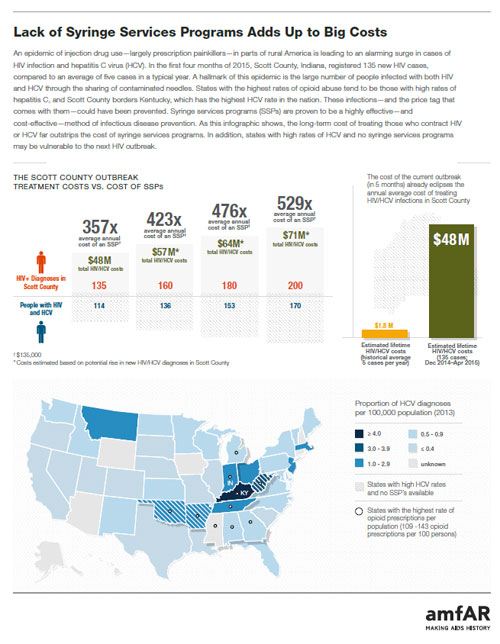Lack of Syringe Services Programs Adds Up to Big Costs
An epidemic of injection drug use—largely prescription painkillers—in parts of rural America is leading to an alarming surge in cases of
HIV infection and hepatitis C virus (HCV). In the first four months of 2015, Scott County, Indiana, registered 135 new HIV cases,
compared to an average of five cases in a typical year. A hallmark of this epidemic is the large number of people infected with both HIV
and HCV through the sharing of contaminated needles. States with the highest rates of opioid abuse tend to be those with high rates of
hepatitis C, and Scott County borders Kentucky, which has the highest HCV rate in the nation. These infections—and the price tag that
comes with them—could have been prevented. Syringe services programs (SSPs) are proven to be a highly effective—and
cost-effective—method of infectious disease prevention. As this infographic shows, the long-term cost of treating those who contract HIV
or HCV far outstrips the cost of syringe services programs. In addition, states with high rates of HCV and no syringe services programs
may be vulnerable to the next HIV outbreak.
Download the printer-friendly PDF.
Related Content
Surge of HIV Cases Among Drug Users in Indiana Underscores Value of Syringe Services Programs
HuffPo Live: HIV Cases Lead Indiana To Extend Needle Exchanges
Delivering Harm Reduction Services Including Syringe Exchange
